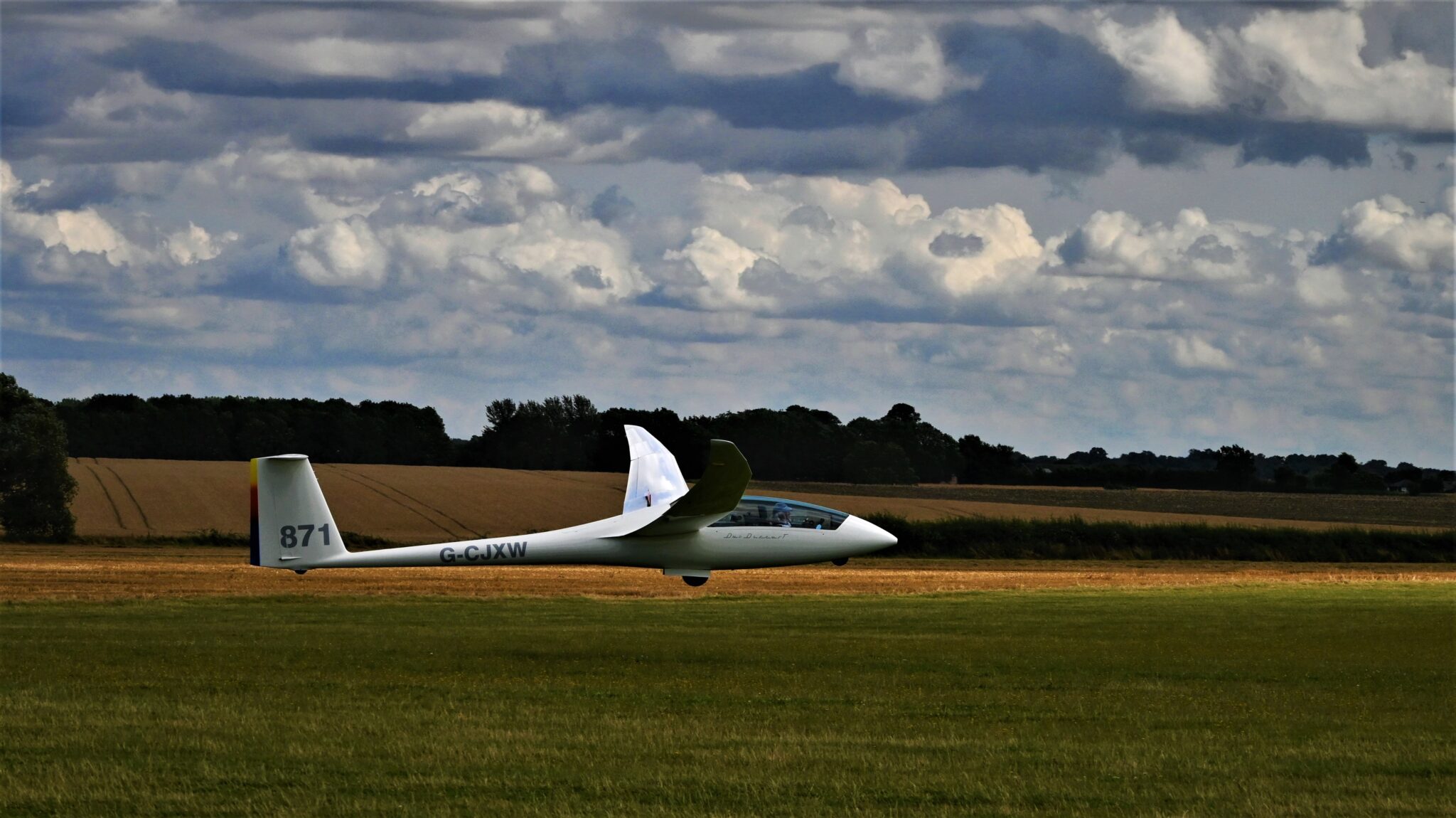The video displays a glider circling within a thermal, accompanied by the sound emitted by the electronic variometer, or vario. The pitch of this sound alters to signal whether the glider is ascending or descending in the air, enabling the pilot to focus on flying without needing to glance at the instruments. Two variometers are present: one mechanical, positioned at the center, and one electronic, situated at the top-right. Both feature needles that provide a visual indication of air currents, whether rising or sinking.
In East Anglia, gliders take advantage of the same soaring techniques as birds, riding thermals to stay airborne and climb higher. While other regions might rely on hilly terrain for lift, the flat landscapes of East Anglia mean thermals are the go-to source for glider pilots. These warm updrafts, born from the sun’s heat on the ground, provide the perfect lift for gliders to cruise through the skies, offering pilots a thrilling way to explore the scenic beauty of the region from above.
Imagine the sun shining down on the Earth, warming up the ground below, especially on a sunny day. As the ground gets hotter, it heats up the air above it and warm air being less dense than cool air it starts to rise. This rising warm air creates what we call a thermal. It’s a bubble of warm air trying to escape upward into the cooler atmosphere. These thermals can get pretty strong, especially when the sun heats up the ground a lot. Glider pilots love them because they can ride these rising columns of warm air to gain height and stay airborne without needing an engine. So, when you see birds circling high up in the sky, they’re probably riding a thermal, just like gliders do!
With ideal weather conditions, it is possible to stay airborne for many hours and travel hundreds of kilometres using only thermals to stay aloft.
The map depicts a standard cross-country glider journey lasting close to five hours, spanning nearly 350 kilometers. The aircraft employed was a Duo Discus, renowned for its two-seat high-performance capabilities. This specific variant of the glider is outfitted with an engine as a precautionary measure.
Click on the map to enlarge.

The Duo Discus is a popular two-seat glider manufactured by Schempp-Hirth. It’s known for its performance and versatility, making it suitable for both recreational flying and competitive cross-country soaring.
Covering a distance of almost 350 kilometers in nearly five hours demonstrates skilled piloting and favorable weather conditions. Cross-country glider pilots often plan their routes carefully, taking advantage of thermal activity and wind patterns to optimize their speed and efficiency. If you have any specific questions about the flight or the Duo Discus glider, feel free to ask!




